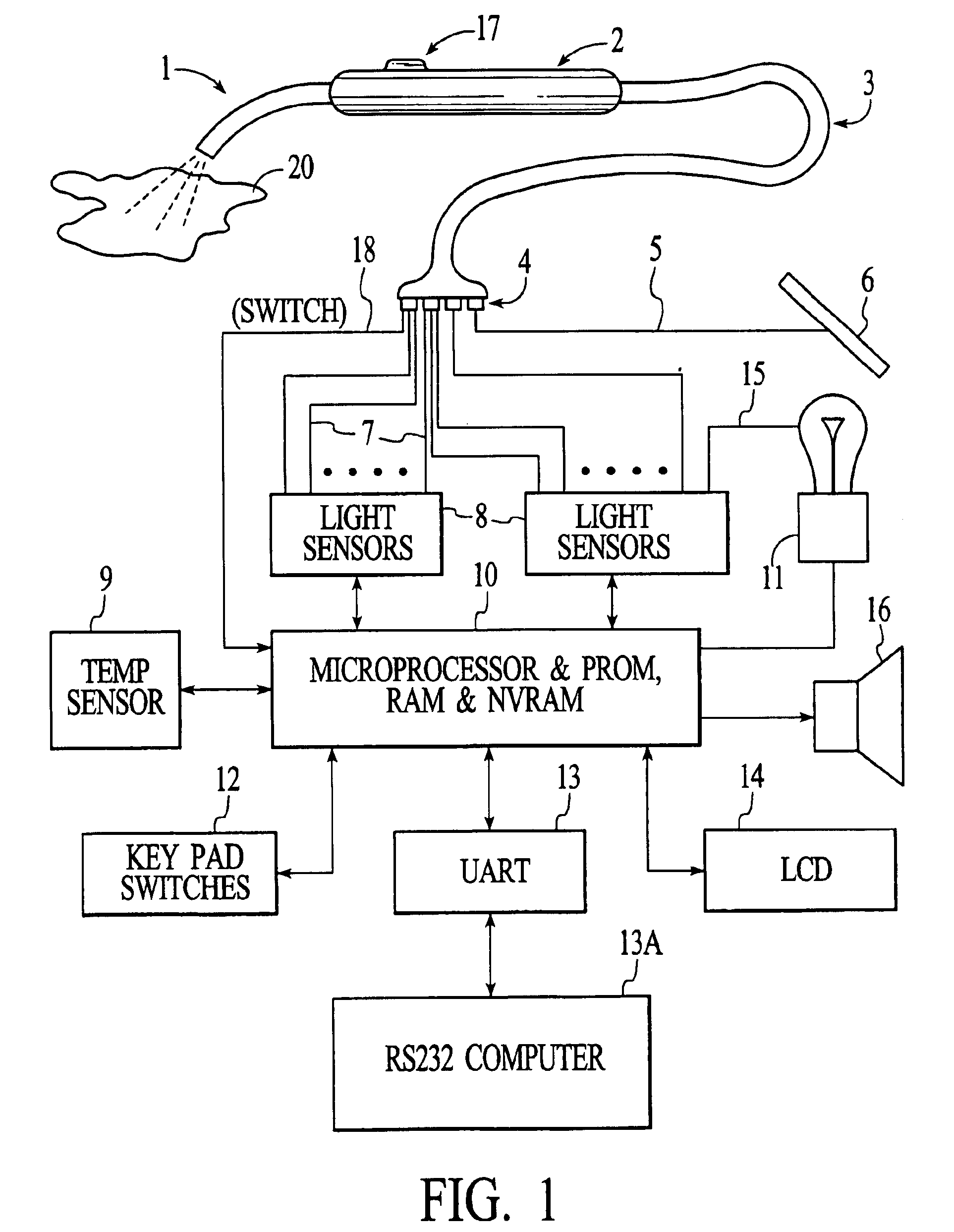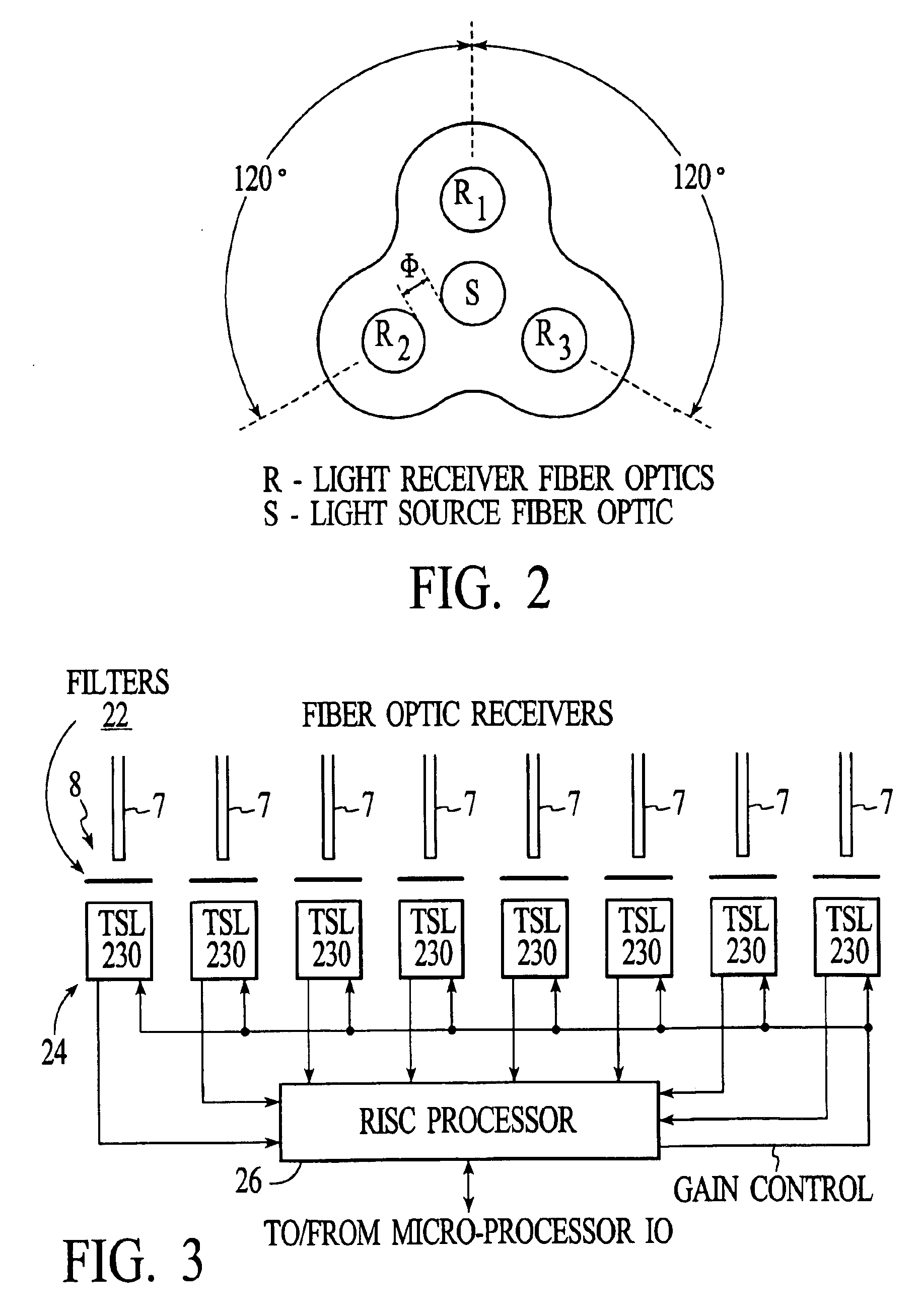Methods for determining optical characteristics of dental objects using an imaging element and a spectrometer apparatus
- Summary
- Abstract
- Description
- Claims
- Application Information
AI Technical Summary
Benefits of technology
Problems solved by technology
Method used
Image
Examples
Embodiment Construction
[0050]The present invention will be described in greater detail with reference to certain preferred embodiments. At various places herein, reference is made to an “object,” for example. It should be understood that an exemplary use of the present invention is in the field of dentistry, and thus the object typically should be understood to include teeth, dentures, dental-type cements or the like, although for discussion purposes in certain instances reference is only made to the “object.”
[0051]With reference to FIG. 1, an exemplary preferred embodiment of a color measuring system and method in accordance with the present invention will be described.
[0052]Probe tip 1 encloses a plurality of fiber optics, each of which may constitute one or more fiber optic fibers. In a preferred embodiment, the fiber optics contained within probe tip 1 includes a single light source fiber optic and three light receiver fiber optics. The use of such fiber optics to measure the color of an object will b...
PUM
 Login to View More
Login to View More Abstract
Description
Claims
Application Information
 Login to View More
Login to View More - R&D
- Intellectual Property
- Life Sciences
- Materials
- Tech Scout
- Unparalleled Data Quality
- Higher Quality Content
- 60% Fewer Hallucinations
Browse by: Latest US Patents, China's latest patents, Technical Efficacy Thesaurus, Application Domain, Technology Topic, Popular Technical Reports.
© 2025 PatSnap. All rights reserved.Legal|Privacy policy|Modern Slavery Act Transparency Statement|Sitemap|About US| Contact US: help@patsnap.com



